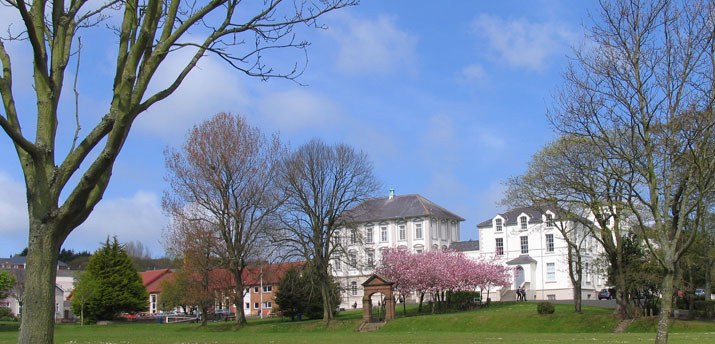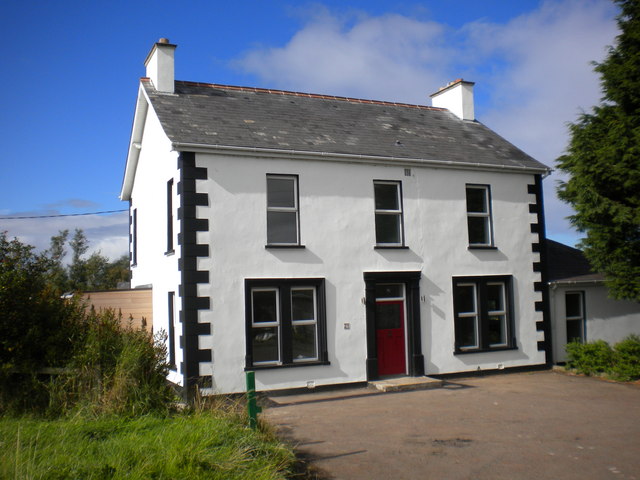The earliest known settlement in Ireland was found at Mountsandel Fort, about one mile from the centre of present day Coleraine. It was there where nomadic hunter-gatherers built their shelters in about 7000 BC. Dating from about 4000 BC, there is much evidence of Neolithic Man in the area, such as the stone tomb at Magheraboy and the standing stone at Carnalridge.
Coleraine is reputed to have received its name when St Patrick passed through around 450 A.D. Popular tradition states that the Saint was given a piece of land by the local chieftain on which to build a church. The ground was covered with ferns, and so he called it “Cuil Rathain”, which means the ferny corner. Again, authorities differ in this, some asserting the meaning to be “the rath at the bend of the waters”. Over the centuries the name was anglicized and became “Coleraine”. It is believed that the first church, or monastery, was in the same location as the present St. Patrick’s Church. The earliest record of Coleraine occurs in Adomnán’s ‘Life of Saint Columba’, written on Iona, circa 700.
Located at the lowest fordable point of the river Bann, Coleraine suffered repeated devastation by competing tribes, by the Vikings in 830 AD and by the Normans in 1177. It was not until the end of the 16th century that the Ulster tribes were subdued. In 1610 the first settlers arrived to rebuild Coleraine. Fortifications were erected and the town was laid out in its present form.

In 1642 the dispossessed Irish rebelled and for six weeks laid siege to the town, during which 2000 of the inhabitants died of disease and famine, many of them having fled from the countryside seeking protection. The siege was broken by the arrival of a Scottish army. In 1689, when the invading army of James II approached the town, the people fled to Derry, where they again suffered siege and famine. James II was eventually defeated at the Battle of the Boyne.
As a result of the devastation of the countryside, poverty was widespread and over the next 200 years there was a steady exodus of locals to the New World. There was continued threat of uprising and there was much suffering as a result of the serious outbreak of cholera in 1832 and the Great Famine of 1840-46.

Possibly due to the lack of local opportunities, there was a strong tradition of young men enlisting in the military and many local men fought in the Crimean, Boer and the two world wars. The Battle of the Somme had a particularly devastating effect on the area and there was scarcely a household that did not lose a family member, as witnessed by the long list of names on the local war memorials.
In 1844 a new stone bridge was built across the river and in 1855 the current town hall in the Diamond was built. The town also became an important centre of the linen industry and textile and shirt-making industries expanded. In 1888 the river was dredged and piers built, allowing the passage of ships to Coleraine harbour.
In 1968 the new University of Ulster was opened between Coleraine and Portstewart and the influx of students provided a much-needed new source of income to the providers of accommodation, suffering as a result of tourists going to warmer climates for their holidays.
Like much of Ulster, Coleraine suffered from ‘The Troubles’. In 1973 an IRA car bomb killed six, in 1992 a car bomb exploded in the town centre and in 1995 a massive explosion devastated the entire centre of the town.

A grammar school in Coleraine was first proposed in 1846, but the plan was shelved, die to the economic crisis resulting from the Great Famine. Coleraine Academical Institution (C.A.I.) was finally open in 1860, with two masters and 14 boys. The number of students peaked at about 1100 in the 1970s and has since been reduced to 700.

The school includes 27 acres of sports fields, including rugby and football pitches, tennis courts, cricket pitches, an athletics track, a swimming pool, a games hall with multi-gym equipment and a boathouse.
|
|
|
Two well-known C.A.I. Old Boys
Boarding, which was a feature of the school since its beginning, reached its peak in the 1970s with 300 boarders, but since then it went into decline, and the boarding department was closed in 1999.
In 2015 the all-boys C.A.I was merged with the all-girls Coleraine High School, to become Coleraine Grammar School.
Just past the school, off the Castlerock Road, was the farm of my maternal grandmother’s family. Her ancestors had farmed the land since at least the early 1800s. Unfortunately, there are very few records that have survived from before the mid-1800s, so the tracing of Irish ancest0rs soon meets a dead-end.

My great grandparents had eight children, seven girls and only one boy. I guess that the only son did not want to be a farmer, and the farm was eventually sold. The only son died when he was only 48.

Today some peripheral buildings have been added to Kilcranny House, which now belongs to an organization that promotes much-needed peace and reconciliation.
I suspect that the organization would have had my ancestor’s approval.


